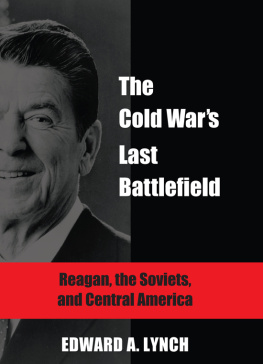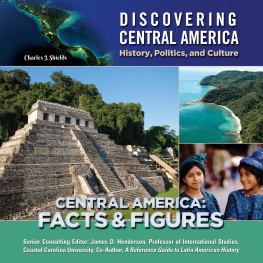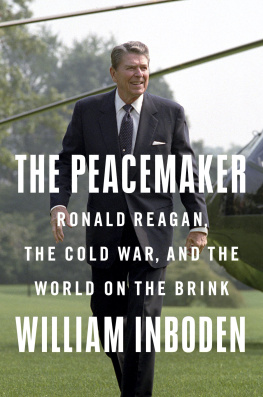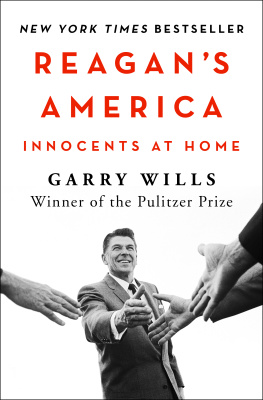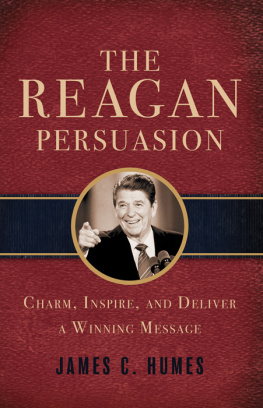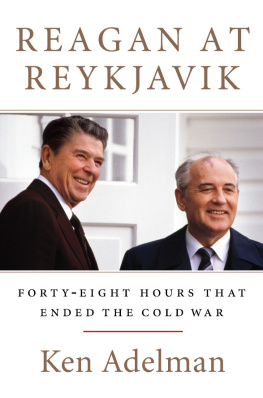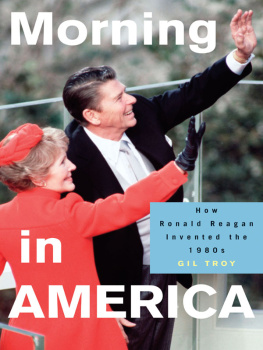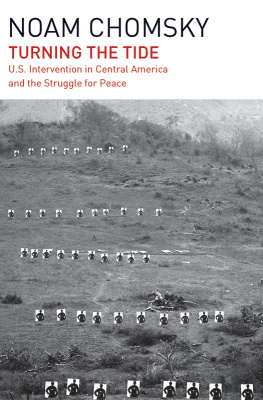Cover image: Ronald Reagan, head-and-shoulder image (1981). Courtesy of the Library of Congress, Prints and Photographs Division, Washington, DC, 20540.
Published by State University of New York Press, Albany
2011 State University of New York
All rights reserved
Printed in the United States of America
No part of this book may be used or reproduced in any manner whatsoever without written permission. No part of this book may be stored in a retrieval system or transmitted in any form or by any means including electronic, electrostatic, magnetic tape, mechanical, photocopying, recording, or otherwise without the prior permission in writing of the publisher.
For information, contact State University of New York Press, Albany, NY
www.sunypress.edu
Production by Eileen Meehan
Marketing by Michael Campochiaro
Library of Congress Cataloging-in-Publication Data
Lynch, Edward A.
The Cold War's last battlefield : Reagan, the Soviets, and Central America / Edward A. Lynch.
p. cm. (Global academic publishing book)
Includes index
ISBN 978-1-4384-3949-5 (hardcover : alk. paper)
1. United StatesForeign relations19811989. 2. United StatesForeign relationsCentral America. 3. Central AmericaForeign relationsUnited States. 4. United StatesForeign relationsSoviet Union. 5. Soviet UnionForeign relationsUnited States. 6. Cold War. I. Title.
E876.L94 2011
973.927dc22 2011009299
10 9 8 7 6 5 4 3 2 1
Preface
Why a Book on Central America?
More than twenty years have passed since the nations between Mexico and Panama dominated the headlines of American daily newspapers. Throughout the 1980s, it was barely possible to watch a news report on television, listen to a member of Congress, or pass a magazine rack without being compelled to learn something about El Salvador, Nicaragua, the contras, the death squads, or the controversy surrounding U.S. policy in the region. So dominant a place in American consciousness did the region command that the 1984 movie version of science fiction author Arthur C. Clarke's 2010 began with a crisis in Central America that threatened to escalate into World War III.
Having reached Clarke's year of crisis, however, we hear very little about Central America, and we have no foreboding of crisis there. Indeed, one of the two major players in Clarke's fictional crisis, the Soviet Union, no longer exists. Since the 1980s, other crises, from Somalia to Bosnia to Rwanda to Chechnya and ultimately to Ground Zero and the Pentagon have all but erased Central America from the public mind. This is true even as some of the players from the 1980s, such as the presidents of Costa Rica and Nicaragua, have reappeared and regained the offices they held twenty years ago.
The crises in El Salvador and Nicaragua did not have the same dramatic resolutions as crises elsewhere. There was no Berlin Wall to topple. There were no live broadcasts of electronic warfare as there were in both wars in Iraq. Changes in government in Central America did not result in statues of dictators being pulled down. The Americans who contributed to the positive outcomes in Central America never stood under a Mission Accomplished banner to receive the congratulations and thanks of a president. Crisis resolution in Central America was decidedly untelegenic, in an age that more and more demanded compelling pictures.
Perhaps that is why, in the twenty years since the end of the Central American crisis, there has not been a book-length treatment of what happened in the region in the 1980s and what it meant for the region, for the United States, and for the world. While many library shelves are filled with books on the civil wars of Central America, virtually all were written while the wars were going on and while U.S. policy toward the region was being formulated. In fact, many of the books on Central America were designed to influence the debate over U.S. policy. While timely, they lack the perspective that two decades can bring.
This is not to say that the researcher is without source materials. There are excellent country studies available on El Salvador, Nicaragua, Grenada, Guatemala, and so on. Some authors have focused on U.S. policy toward Latin America or the developing world as a whole and treat Central America in passing. The major U.S. policy makers, from Ronald Reagan to George Shultz to Oliver North, have all written memoirs in which they devote as least some space to the issues of Central America. There are some very good treatments of U.S. foreign policy in the 1980s, as well as authoritative accounts of the end of the Cold War. Such treatments, for the most part, either do not mention Central America or fail to assign the region its proper place in the global conflict between the United States and the Soviet Union.
I hope to fill a significant (and surprising) gap in the academic and political literature with this book. Starting with the 1979 revolutions in Nicaragua and El Salvador, and working toward the emergence of democracy in both countries in 1990, I present a comprehensive treatment of how the Soviet Union and the United States came to be involved in civil wars in Central America and what especially American involvement was intended to bring about, as contrasted with the actual results of that involvement.
The Argument
President Ronald Reagan perceived a double threat to the United States in the bloody and bitter conflicts in Central America in the 1980s. On the one hand, Reagan believed that the Soviet Union, working mostly through Cuba, had taken a strong interest in Central America and was determined to use the conflicts in the region to weaken, and possibly threaten, the United States. Reagan was determined to stop Soviet intervention in Central America and to reverse the diplomatic and strategic gains that the Soviets had already made when Reagan came into office. Reagan believed that promoting democracy in Central America was the surest way to counter the efforts of the Soviets.
On the other hand, Reagan was similarly determined to implement policies in Central America that were significantly different from those of earlier administrations. Reagan rejected the traditional Cold War notion among American policy makers that the best defense against a Communist threat from the left was a strong dictatorship of the right. For Reagan, the desire for freedom was a universal human aspiration. And this desire for freedom existed not only in the political realm, but also in the economic. Put differently, Salvadorans, Nicaraguans, and others, in Reagan's mind, wanted the opportunity to see prosperity, both for themselves and for their countries. Reagan shared their aspirations.
The president's desire to see free and prosperous nations in Central America, however, put him on a collision course with many members of the foreign policy bureaucracy, including members of his own Cabinet. Some of Reagan's closest advisors had considerably less enthusiasm than Reagan did for democracy, and even less enthusiasm for the prospect of a region filled with countries that were prosperous enough to have no particular need for American assistance. At the same time, Reagan's administration also included those who desired freedom and prosperity for Central America as much as Reagan himself. These divisions, particularly given Reagan's management style, resulted in an internal war in Washington that coexisted with the shooting wars of Central America. Thus, there were two axes of conflict over Central America being played out at the same time. The interplay between these two struggles provides a recurring subplot in the narrative that follows.


